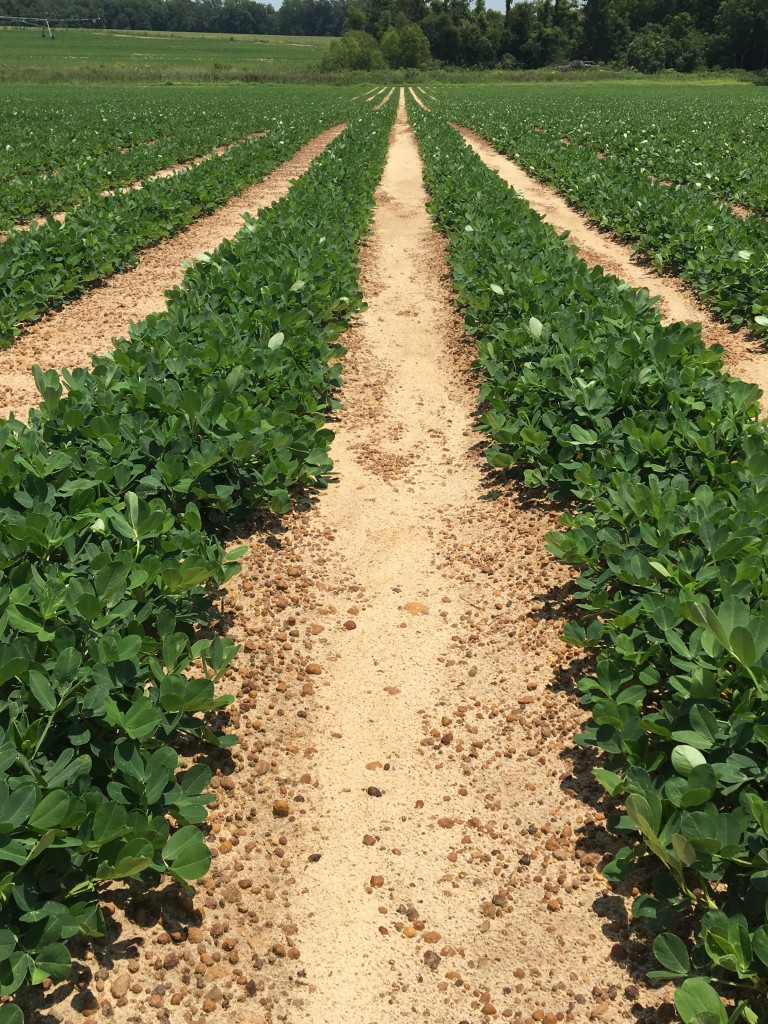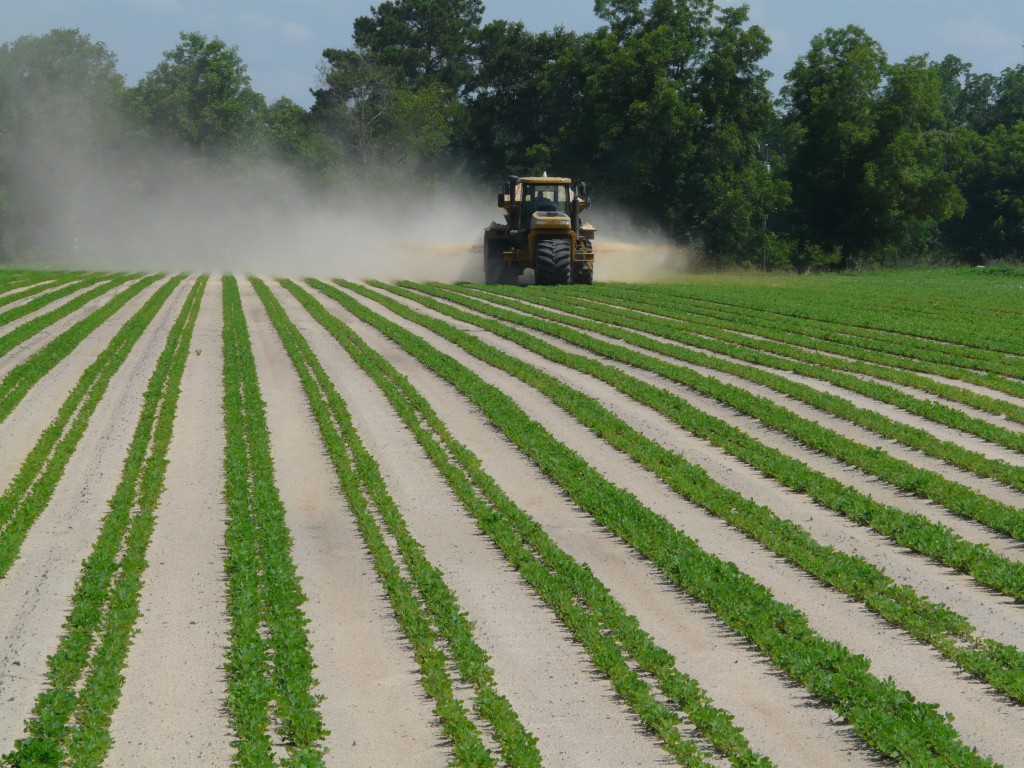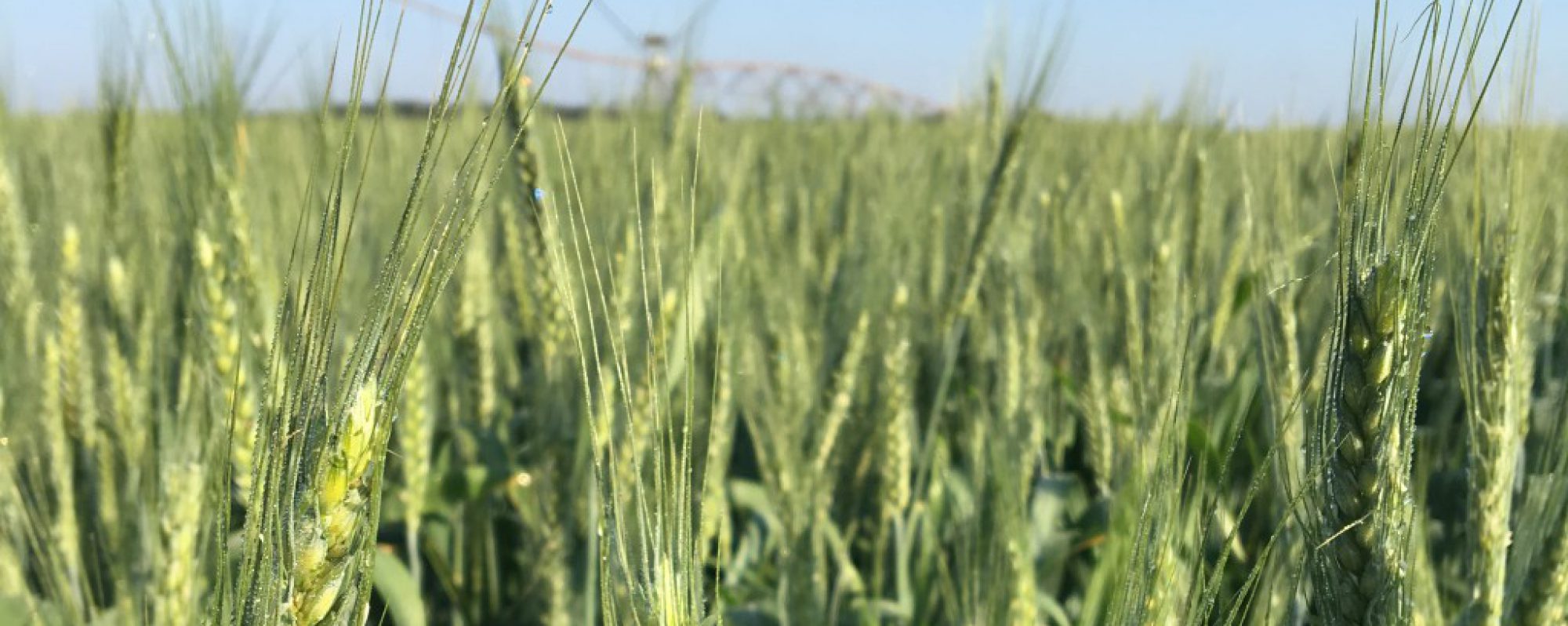
This is what our peanuts look like in Wilcox County right now. Seeing a little early leaf spot and caterpillar feeding. But on the note of fertility,
It has been said, “If it don’t rain, it don’t matter.” We are putting out landplaster in peanuts now to supplement calcium. If we don’t have enough calcium, we get “pops”. This usually happens more in dryland fields as we also need water to move the Ca through the roots. Peanut plants absorb calcium through the roots (and transported upward in xylem) and NOT translocated through the leaves. Once peanuts begin to peg, the peg and developing pod passively absorb Ca directly from the soil. This is why we need high levels of Ca in the pegging zone. Ca must be available in a water soluble form and is why gypsum or landplaster is recommended to apply at early flowering. We also need rain very bad. Thankfully, we are getting some today.
UGA Soil Scientist Dr. Glen Harris has more to say about different types of Calcium:
“When we switched from growing small-seeded Georgia Green to large-seeded Georgia 06G we really thought we would need to increase our gypsum or calcium recommendations. But after years of research we concluded that the recommendations didn’t need to change. You can still use a pegging soil sample (3 inches deep, next to the peanut row soon after emergence) if you have at least
- 500 lb/a of soil test calcium AND
- Calcium to potassium ratio is 3:1 or better
In this case, you don’t need to apply gypsum. If you do not meet EITHER of these requirements then you need to apply 1000 lb/a gypsum at early bloom. Also, all peanuts grown for seed should automatically receive this gypsum application regardless of soil test calcium levels.
And what if you are about 60 days after planting and don’t want to run over lapped vines and discover you need some calcium? The period from 60 to 90 days after planting is considered “peak pod fill” and research has shown that applying 10 gal/A of calcium chloride thru the pivot with irrigation water can provide some much needed calcium to developing pods. This treatment will not raise the soil test calcium levels like lime or gypsum will but can be effective.
The two most common ways of supplying calcium to the pegging zone of peanut are lime at planting and gypsum (calcium sulfate) at early bloom. Again, timing of applying these two is critical and is linked to the solubility of calcium in these materials. The calcium in lime is not as soluble as the calcium in gypsum so it must be applied earlier to give it time to get in the pegging zone. Applying lime at early bloom is too late.
What about applying gypsum at planting? I get this question all the time. While in some years you could probably get away with this, in other years, applying gypsum at planting would have been too early and not a good idea. Heavy rains on sandy soils can actually “leach” (dissolve and move downward) the calcium right past the pegging zone (top 4 inches). If you applied gypsum too early or if you got 4 to 6 inches of a “leaching rain” soon after application, then you may consider reapplying the gypsum.
And what about foliar feeding calcium? The answer for timing of that one is easy…NEVER! Calcium simply does not translocate from leaves to developing pods. Plus you could never get enough calcium to the pods from a quart per acre foliar calcium – even if it did work.

